
Old School Bodybuilding Workout
One of the most persistent questions floating around the minds of many aspiring bodybuilders is “What is the best way to train to build muscle?”. The answers are as varied as the numerous pieces of gym equipment that occupy any fitness establishment. There are many choices as to the best exercises to use, how many sets and reps, how many days per week to train and what type of program to follow.
Read this article to get insight into the logic of training methods from the Golden Era, and see sample training routines that can help you pack on mass faster than you’ve ever thought possible!
The Old School bodybuilders didn’t have as many choices as today’s bodybuilder has. The gyms back in the 1970’s and ’80’s were typically smaller, hardcore gyms designed to appeal to the serious trainer. Most gym members were bodybuilders, powerlifters and others who were trying to get big and strong. Those establishments were equipped with plenty of free weights such as barbells, dumbbells, benches and some cable machines. However, cardio equipment like treadmills, stair masters and elliptical machines were not yet available. Also, many of the fancier machines, that help to isolate and “tone” muscles, were also a thing of the future.
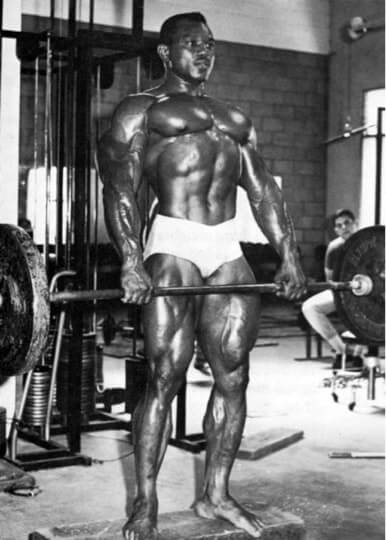
Basic OldSchool Workout Exercises
As a result, the Old School bodybuilding meant relying on the basic movements using primarily barbells and dumbbells to develop their physiques. This lack of variety turned out to be a blessing in disguise as the free weights helped to build greater muscle mass and strength compared to the more sophisticated equipment that was yet to come. Barbells and dumbbells required to body to utilize greater coordination and balance in order to perform the movements. The result was increased strength and size, much more pronounced than when machines are used.
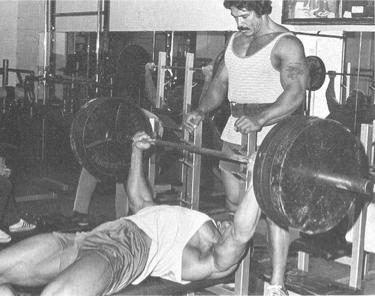
Compound Movements
The compound movements, exercises that utilize several major muscle groups during the execution of the exercise, are responsible for building the greatest muscle mass. Exercises like bench presses, barbell rows, squats, overhead presses, dips and dead lifts, allowed the bodybuilders to use more weight and develop more muscle. Bodybuilders in those days knew that the basics were the key to getting big.

Isolation Exercises
Along with the basic, compound movements, bodybuilders also added isolation exercises in order to develop their physiques and bring weak parts up to par. They knew, for example, that barbell and dumbbells presses were a great exercise for developing mass and strength in the shoulders but they also needed to add side lateral raises and bent over lateral raises with dumbbells in order to build the side and rear heads of the deltoids. Without this development, the shoulders would not look as impressive. Because there were very few or no machines designed to isolate these muscles, the bodybuilders had to use free weights (barbells and dumbbells) to accomplish their goals. Again, the use of free weights for these movements helped to build more muscle mass and strength.
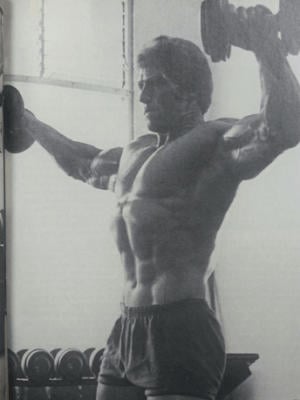
Working Out by Muscle Group
The Old School bodybuilders would split the body up in several muscle groups in order to work each muscle group adequately. A six day split would separate the muscle groups into three separate days and each muscle group would be trained twice a week. For example, bodybuilders would train chest and back on Monday and Thursdays, legs and abdominals on Tuesday and Friday and shoulders and arms on Wednesday and Saturday.
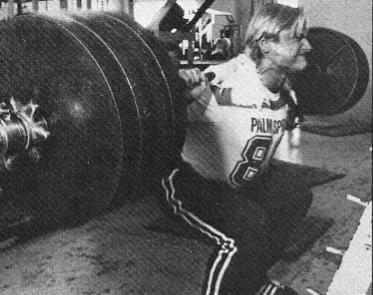
Recovery Time
If a bodybuilder needed more recuperation time and could not recover adequately in order to train six days in a row, they could train more muscle groups in one workout. This would allow for more rest days so the body could recuperate better. For example, bodybuilders could train the chest, shoulders, triceps and calves on Monday and Thursday and their legs, back and biceps on Tuesday and Friday. By training all their muscle groups in a two day split instead of three, this would allow them three days of rest each week.
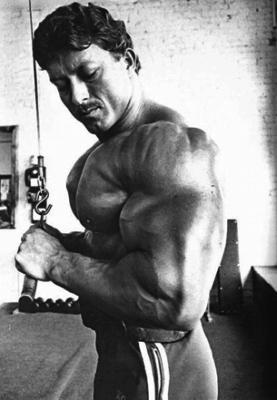
Number of Exercises
The amount of exercises and sets a bodybuilder would use would vary among each individual. Some bodybuilders, like Arnold Schwarzenegger and Sergio Oliva, would do multiple exercises and sets for each muscle group to insure that the muscle was being properly trained from each angle. They would normally do up to 5 sets per exercise and 4-5 exercises for each muscle group for a total of 20-25 sets for each body part.
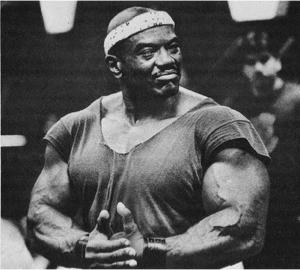
Other bodybuilders, such as Casey Viator and Mike Mentzer, used less sets in order to get more recuperation. They would limit the number of sets per exercise to only 3 and would also do less exercises to train each muscle group. This would bring their total number of sets down to 10-12, about half of what the high volume trainers would use. Mentzer was often quoted as only doing a total of 5 sets per muscle group.

What About Cardio Exercises
The use of cardio exercise to get into shape was surprisingly nearly non-existent in the time period from the 1960’s to the 1980’s. As mentioned before, gyms were well equipped with barbells, dumbbells and heavy, basic machines. Cardiovascular equipment such as treadmills, stair masters and elliptical machines were not developed yet. Some gyms would have a couple stationary bikes included in the establishment but they were not nearly as comfortable or as advanced as the equipment that frequents health clubs today.
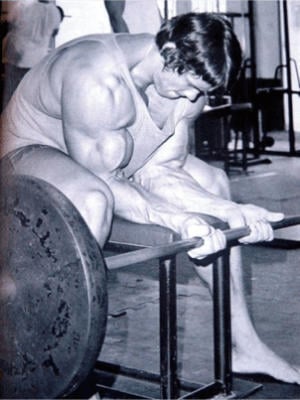
Working Intensity
Bodybuilders got into shape for competitions by both adjusting their diets and increasing the intensity of the workout. The high volume trainers would burn an incredible amount of calories just by the sheer amount of work performed at each training session. Many bodybuilders would increase the frequency of their training as the contest got closer, doing a double split routine for the last twelve weeks before the competition. A double split routine would include two training sessions per day, one in the morning and another workout about eight hours later in the late afternoon or early evening.
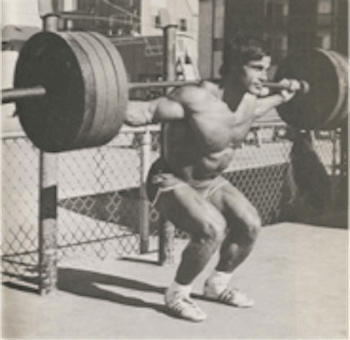
The intensity of a workout was often adjusted by decreasing the amount of rest taken between sets. By training faster, bodybuilders would automatically train harder. Arnold was rumored to train with so many sets and so quickly that he would need three sets of training partners that he would alternate with workouts in order to keep up with him. With the decreased rest periods between sets and the increased volume of the workout, bodybuilders could get into top contest condition without the use of cardio.
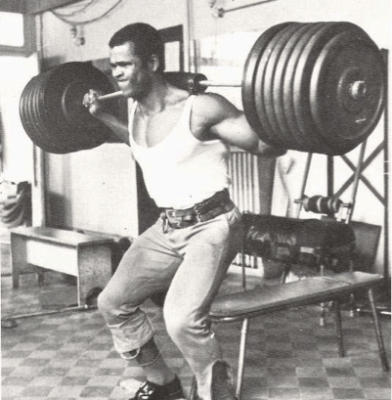
The low volume bodybuilders would increase the intensity of their workouts by using heavier resistance and pushing a set past the normal limit of failure. Training techniques such as forced reps, rest pause, drop sets and forced negatives would push the muscles to failure and beyond. Because of the extreme high intensity, bodybuilders using these techniques would typically perform half as many sets as the high volume trainers.

Pyramid System Training
The pyramid system of training was in vogue during those days. Bodybuilders using multiple sets per exercise would typically warm up with a light weight and gradually increase the resistance over the 4-5 sets so they were using their heaviest weights for the last sets. As mentioned above, the bodybuilders would start training faster while still using heavy weights as the contest got closer. This would increase the intensity of the workout while still using the same weights because of the decreased rest periods.
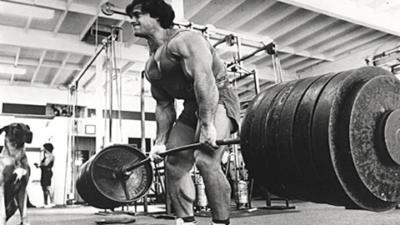
The lower volume, high intensity workouts would not use the pyramid system because they were employing less sets for each exercise. The bodybuilders using the low volume workout would do 2-3 light sets at low intensity to warm up the muscles, joints and tendons. When they were fully warmed up, they would use the heaviest weights possible for the required number of sets. They would take the set to failure, often using advanced training techniques such as the rest-pause method, drop sets or forced reps to go beyond normal muscle failure. Because each working set was so intense, the rest periods for this workout would be longer in order to fully recuperate before taking on the next heavy set.
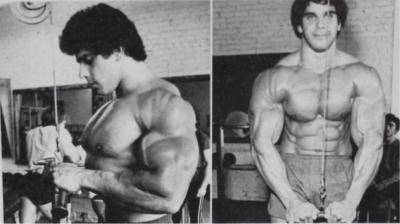
Old School Bodybuilding Workout Using Free Weights
Below is an example of an Old School Bodybuilding Workout using free weights, basic exercises and a typical bodybuilding split used in those days. There are two workouts listed, one for high volume and the other low volume. Give both workouts a try and see which one works best for you. Try each workout routine for 4-6 weeks before taking a full week off to recuperate and then switch to the next routine for another 4-6 weeks.
The Six Day Split Routine – High Volume Workout
Monday – Thursday
- Bench Press – 5 sets of 6-10 reps
- Incline Press – 4 sets of 6-10 reps
- Flat Dumbbell Flyes – 4 sets of 8-10 reps
- Dumbbell Pull-overs – 3 sets of 10-12 reps
- Wide-Grips Chins – 4 sets of 10 reps
- Barbell Rows (overhand wide grip) – 4 sets of 6-10 reps
- T-Bar Rows – 4 sets of 6-10 reps
- Seated Cable Rows – 3 sets of 8-10 reps
Tuesday – Friday
- Roman Chair Sit-ups – 4 sets of 100 reps each set
- Lying Leg Raises – 4 sets of 50 reps each set
- Seated Twists (using a broomstick) – 3 sets of 50 reps each set
- Barbell Squats – 5 sets of 6-10 reps
- Vertical Leg Press – 4 sets of 8-10 reps
- Leg Curls – 4 sets of 8-10 reps
- Barbell Stiff Leg Deadlifts – 4 sets of 8-10 reps
- Standing Calf Raises – 4 sets of 6-12 reps
- Donkey Calf Raises (using 1-2 guys on the back for weight) – 4 sets of 12-20 reps
Wednesday – Saturday
- Seated Press Behind the Neck – 4 sets of 8-12 reps
- Side Lateral Raises – 4 sets of 8-12 reps
- Bent Over Lateral Raises – 4 sets of 8-12 reps
- Barbell Upright Rows – 4 sets of 8-12 reps
- Barbell Shrugs – 4 sets of 8-12 reps
- Tricep Pushdowns – 4 sets of 8-12 reps
- Lying Triceps Extensions – 4 sets of 8-10 reps
- Seated One-Arm Dumbbell Tricep Extensions – 4 sets of 8-12 reps
- Incline Curls – 4 sets of 8-12 reps
- Barbell Curls – 4 sets of 8-10 reps
- One-Arm Concentration Curls – 4 sets of 10-12 reps
- Reverse Barbell Curls – 4 sets of 8-12 reps
- Barbell Wrist Curls – 4 sets of 10-12 reps
The Low Volume Workout
Monday
- Incline Barbell Press – 3 sets of 6-8 reps
- Incline Dumbbell Flyes – 2-3 sets of 6-8 reps
- Weighted Dips – 2 sets of 6 reps
- Reverse Grip Lat Pulldowns – 3 sets of 6-8 reps
- One-Arm Dumbbell Rows – 3 sets of 6 reps
- Deadlifts off Floor – 3 sets of 6-8 reps
- Seated Machine Press – 3 sets of 6 reps
- Upright Rows – 3 sets of 6-8 reps
- Machine Double Lateral Raises – 2-3 sets of 6-8 reps
Wednesday
- Leg Extensions – 3 sets of 8-10 reps
- Full Barbell Squats – 3 sets of 6-10 reps
- Hack Squats – 3 sets of 6-8 reps
- Leg Curls – 3 sets of 6-8 reps
- Weighted Hyper-Extensions – 3 sets of 10 reps
- Standing Calf Raises – 3 sets of 10-12 reps
- Close Grip Bench Press – 3 sets of 6-8 reps
- Overhead Barbell Extensions – 3 sets of 8 reps
- Seated Dumbbell Curls – 3 of 6-8 reps
- Barbell Preacher Curls – 2 sets of 6 reps
Make sure to check out our stacks specifically made for you your muscle-building goals.











